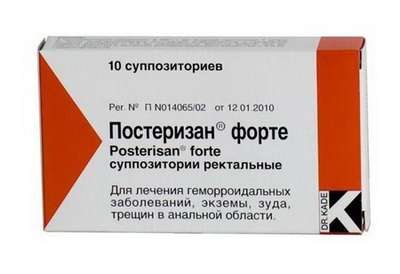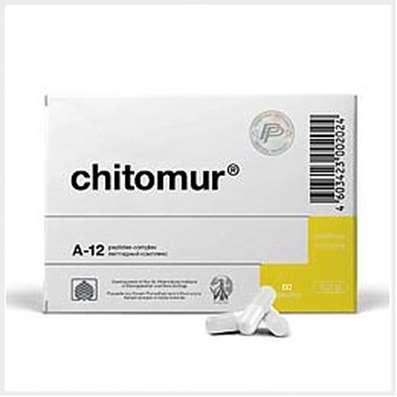Instruction for use: Anopyrin
I want this, give me price
Dosage form: tablets
Active substance: Acidum acetylsalicylicum
ATX
N02BA51 Acetylsalicylic acid in combination with other drugs, except for psycholeptics
Pharmacological groups
NSAID - Salicylic acid derivatives
The nosological classification (ICD-10)
K13.7 Other and unspecified oral white lesion: Aspirin burn of the oral mucosa; Gum pain when wearing dentures; Inflammation of the mouth; Inflammation of the oral mucosa after radiation therapy; Inflammation of the oral mucosa after chemotherapy; Inflammation of the oral mucosa; Inflammation of the mucous membranes of the mouth; Inflammatory diseases of the oral cavity; Inflammatory process of pharynx; Disease of the oral mucosa; Injuries to the oral cavity and larynx; Injuries of the oral mucosa; Trophic diseases of the oral mucosa; Trophic diseases of the oral mucosa; Erosive-ulcerative periodontal disease; Erosive-ulcerative lesion of the oral mucosa; Erotic mucous membrane of the oral cavity; Erotic-ulcerative periodontal lesions; Erosive-ulcerative lesions of the mucous membrane of the oral cavity; Radio-epileleitis; Irritation from dentures; Irritation of the oral mucosa with dentures and braces; Oral cavity; When wearing dentures
M05 Seropositive rheumatoid arthritis: Seropositive rheumatoid arthritis
M25.5 Pain in the joint: Arthralgia; Pain syndrome in musculo-articular diseases; Pain syndrome in osteoarthritis; Pain syndrome in osteoarthritis; Pain syndrome in acute inflammatory diseases of the musculoskeletal system; Pain syndrome in chronic inflammatory diseases of the musculoskeletal system; Pain in the joints; Soreness of the joints; Soreness of joints in severe physical exertion; Painful inflammatory joint damage; Painful conditions of the musculoskeletal system; Painful joint conditions; Painful traumatic affection of joints; Pain in the musculoskeletal system; Pain in Shoulder Joints; Pain in the joints; Joint pain; Joint pain with injuries; Musculoskeletal pain; Pain with osteoarthritis; Pain in the pathology of the joints; Pain in rheumatoid arthritis; Pain in chronic degenerative bone diseases; Pain in chronic degenerative joint diseases; Bone-joint pain; Joint pain; Arthritic pain of rheumatic origin; Articular pain syndrome; Joint pains; Rheumatic pain
M54.3 Sciatica: Ischialgia; Neuralgia of the sciatic nerve; Sciatic neuritis
M79.1 Myalgia: Myofascial pain syndromes; Pain syndrome in musculo-articular diseases; Pain syndrome in chronic inflammatory diseases of the musculoskeletal system; Pain in the muscles; Tenderness of muscles; Muscular soreness in severe physical exertion; Painful conditions of the musculoskeletal system; Pain in the musculoskeletal system; Pain in the muscles; Pain at rest; Muscle aches; Muscle pain; Musculoskeletal pain; Myalgia; Muscle pain; Muscle pain at rest; Muscle pain; Muscular pain of non-rheumatic origin; Muscle pain of rheumatic origin; Acute muscle pain; Rheumatic pain; Myofascial syndrome; Fibromyalgia
M79.2 Neuralgia and neuritis, unspecified: Pain syndrome with neuralgia; Brachialgia; Occipital and intercostal neuralgia; Neuralgia; Neuralgic pain; Neuralgia of intercostal nerves; Neuralgia of the posterior tibial nerve; Neuritis; Neuritis traumatic; Neurological Pain Syndromes; Neurological contractures with spasms; Acute neuritis; Peripheral neuritis; Post-traumatic neuralgia; Severe pain of a neurogenic nature; Chronic neuritis; Essential neuralgia
R50 Fever of unknown origin: Malignant hyperthermia; Hyperthermia malignant
R51 Headache: pain in the head; cephalgia; Pain in sinusitis; Pain in the neck; Pain headache; Headache vasomotor origin; Headache vasomotor origin; Headache with vasomotor disturbances; Headache; Neurological Headache; Continuous headache
R52.2 Other permanent pain: Pain syndrome of non-rheumatic origin; Pain syndrome with vertebrogenic lesions; Pain syndrome with neuralgia; Pain syndrome with burns; Pain syndrome is mild or moderate; Perioperative pain; Moderate and severe pain; Moderately or mildly expressed pain syndrome; Moderate and severe pain syndrome; Ear pain with otitis; Neuropathic pain
R68.8 Other specified general symptoms and signs: Toxemia
Structure and Composition
1 tablet contains 400 mg of acetylsalicylic acid and 111 mg calcium carbonate and 100 mg of glycine as buffer substances; in blister 10 pcs., in box 1 blister.
Pharmachologic effect
Mode of action - gastroprotective, antacid, analgesic, antipyretic, anti-inflammatory.
Inactivates cyclooxygenase violates PG synthesis of prostacyclin and thromboxane. This causes a decrease of pyrogenic effects on the thermoregulatory centers and sensitizing to the nerves, resulting in increased sensitivity to pain. It inhibits platelet aggregation (by inhibition of thromboxane A2 synthesis).
Pharmacokinetics
Well absorbed in the digestive tract. C max total salicylate in plasma achieved in 2 hours Linking blood plasma -. 80-90%. It is metabolized in the liver, the metabolites excreted in the urine.
Clinical Pharmacology
Application of the so-called. Buffer tablets reduce the likelihood of unwanted reactions from the gastrointestinal tract.
Indications for Anopyrin
Pain (headache, toothache, muscle, joint, lumbar, neuralgia), and fever, particularly for acute respiratory diseases, rheumatism.
Contraindications
Hypersensitivity, hemorrhagic diathesis, surgery associated with significant bleeding, peptic ulcer, bronchial asthma, gout.
Side effects
Dyspepsia, increased bleeding, hidden bleeding in the gastrointestinal tract, hypochromic anemia, disturbance of blood, renal papillary necrosis, liver disease, Reye's syndrome in children with allergic reactions.
Interaction
Proximity effect anticoagulants, methotrexate, barbiturates, oral hypoglycemic agents, antibiotics, corticosteroids ulcerogenic action, pyrazolones, reduce - diuretics, blood levels of vitamin C. Action Anopirina increase antacids, agents acidifying the urine, anticoagulants, Pasco, procaine; reduced - barbiturates, corticosteroids, cholestyramine, substances alkalizing urine. Incompatible with alcohol.
Dosing and Administration
Inside, previously dissolved in a small amount of water - at 400-800 mg 2-3 times a day, but not more than 6 g; children 1 to 6 years - 150-200 mg, from 6 to 15 years - 250-500 mg 3 times a day. In acute rheumatism - 100 mg / kg / day in 5-6 receptions.
Overdose
Typical signs - hyperventilation (Kussmaul breathing).
Precautionary measures
With long-term appointment is necessary to control blood picture and consider the possibility of hidden bleeding.
Storage conditions of the drug Anopyrin
In a dry place at a temperature of 15-25 ° C.
Keep out of the reach of children.
The shelf life of the drug Anopyrin
2 years.
Do not use beyond the expiration date printed on the package.

 Cart
Cart





